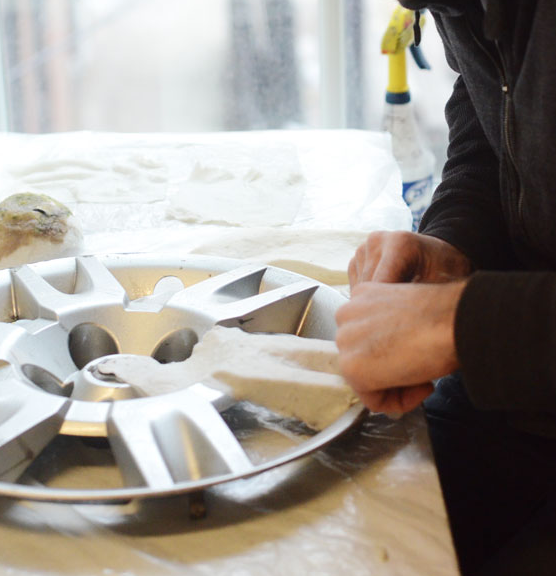Sculptural Paper Making Workshop at AS220
After a run of some popular basic hand papermaking classes at the AS220 Print Shop, a sculptural papermaking class seemed to make sense. Pulp painting is fantastic, but so is taking advantage of the artistic potential of paper to be three-dimensional. Working with paper pulp or freshly formed, wet sheets opens up a world of sculptural techniques that utilize how wet paper sheets dry and the remarkable memory that paper fibers have. Lindsey Beal and I had a great time showing a range of sculptural techniques in this debut class. Check out some photos from the workshop!
Recycled paper pulps or cotton fiber pulp can be packed into moulds, or even found objects with interesting dimensional shapes.
Sheet formation action with a deckle box and high-shrinkage abaca pulp.
After you form a few wet sheets of handmade paper, you can overlap them and cover objects with them. In this case, a Nissan hubcap (so awesome). Just make sure to apply a release agent before covering, such as cooking spray or vaseline. Leave the paper on the object to dry, and remove.
You can also completely cover interesting objects, like this great bone. Once the paper is dry, use an x-acto knife and carefully cut the paper around the object in half. Glue back together with archival glue or methocellulose glue, using extra dry paper to patch it together.
An example of Lindsey Beal’s sculptural paper work. Beautiful!
Paper pulp has fibers that can cling to string, wire, reeds or sticks, or even chicken wire and hardwire cloth. The result is a textured coating over your wire or string. Hang to dry, or play with overlapping multiple strings over forms.
Another techniques is to make an armature from reed, bamboo, or wire. Form sheets and press lightly. Lift the paper sheet and drape over sections of your sculpture. Press and pinch the paper over the wire. You may also use a bit of glue to strengthen the bond.
Stockings/leggings stuffed with perlite (gardening section) and tied off with string outside the form can be a type of removable armature. Wrap the form with wet sheets, making sure not to cover the string tie-off, leaving enough of a hole to untie the string and for the perlite to empty out with the paper is dry. Below is a dry example.
I’ve shown just a few sculptural papermaking techniques here. There are many, many more ways artists are experimenting with the dimensional possibilities within the process of hand papermaking.









